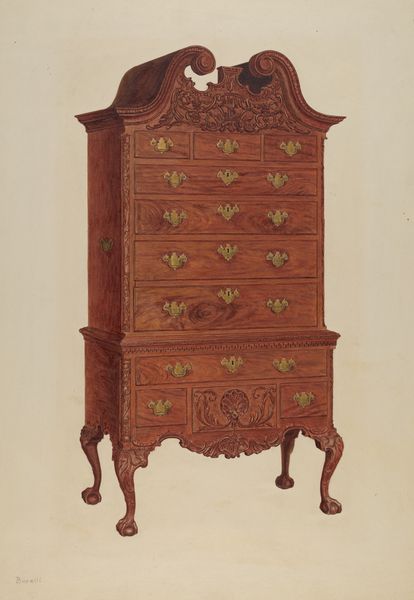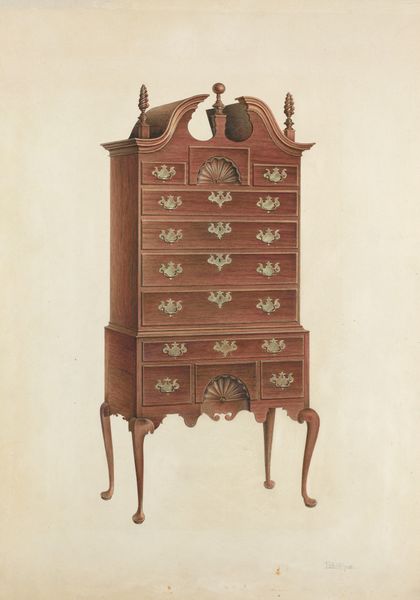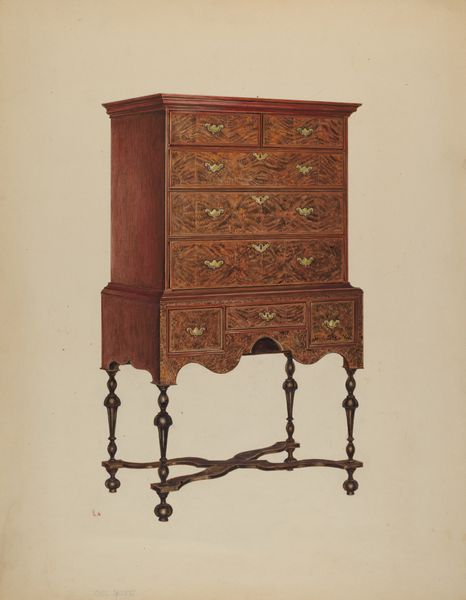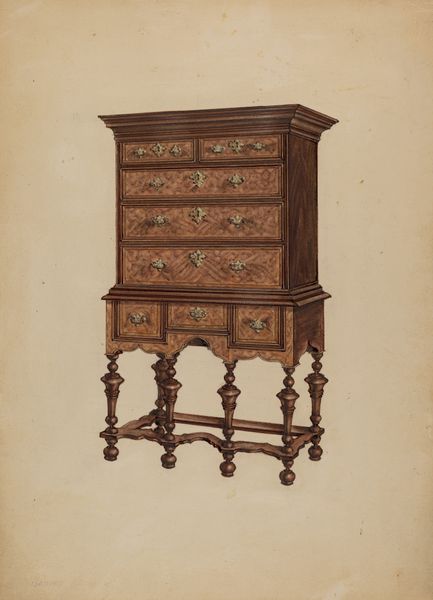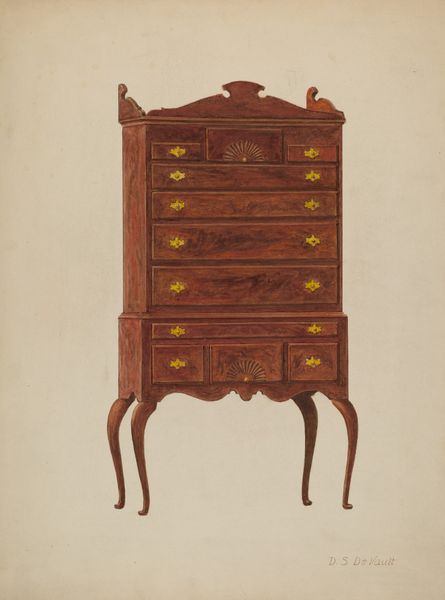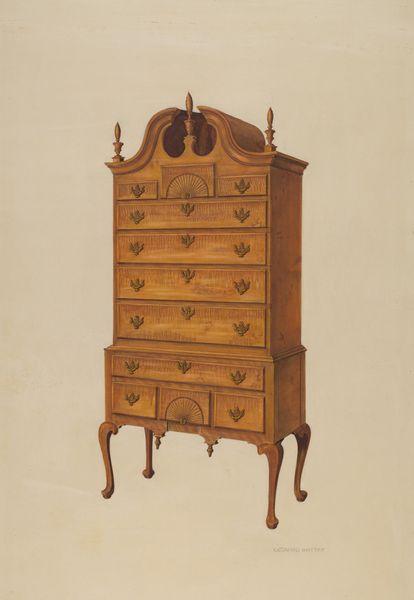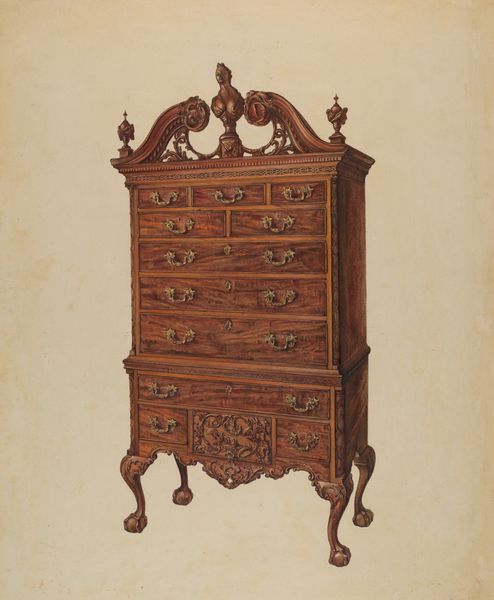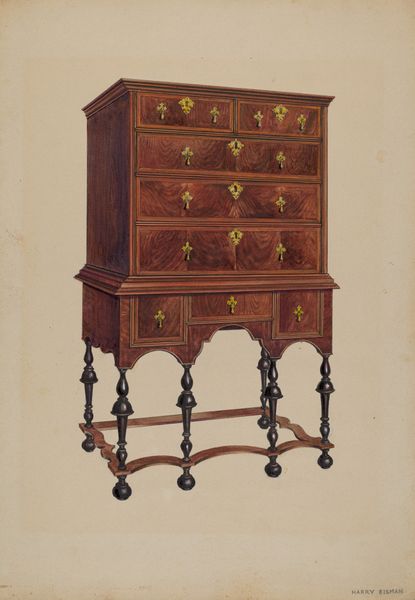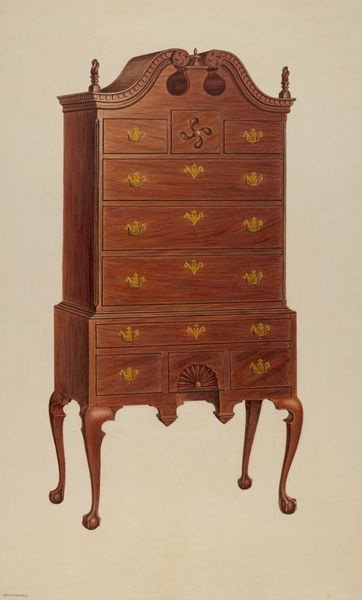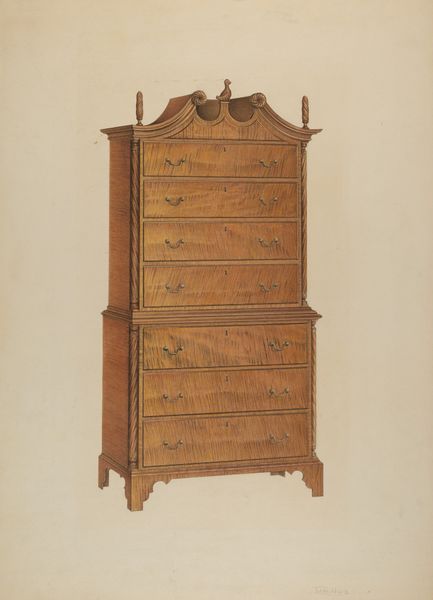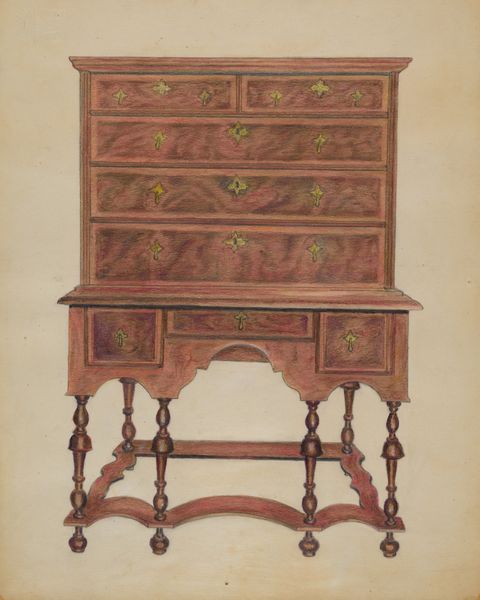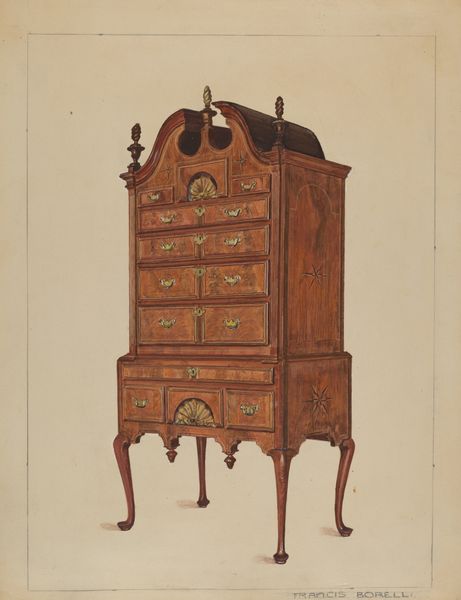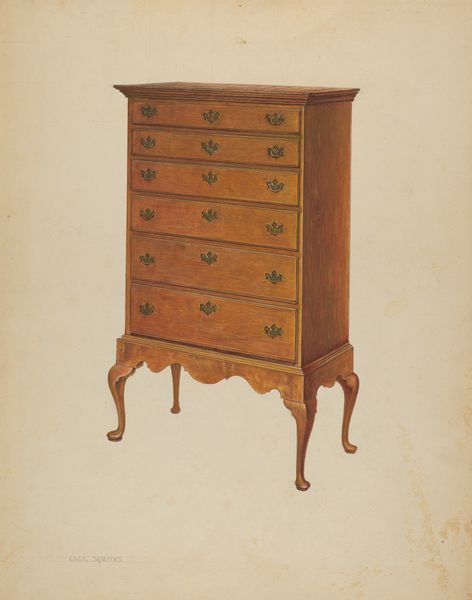
drawing, paper, watercolor
#
drawing
#
water colours
#
paper
#
watercolor
#
ceramic
#
academic-art
#
decorative-art
Dimensions: overall: 57.6 x 45.6 cm (22 11/16 x 17 15/16 in.) Original IAD Object: 96"high; 44"wide; 24 1/2"deep
Copyright: National Gallery of Art: CC0 1.0
Editor: This is "Highboy," a watercolor drawing on paper from around 1939, attributed to Francis Borelli. I’m struck by the detail – it almost looks like a photograph of a meticulously crafted piece of furniture. What does this image bring to mind for you? Curator: What jumps out is the tension between the representation and the real. We’re looking at a *drawing* of an object that is fundamentally about skilled labor, about woodworking, about the consumption habits of a particular class in society. Consider the original Highboy, crafted in wood; how its production relied upon particular forests and transportation networks. Editor: So, the drawing abstracts all of those material realities? Curator: Precisely! It’s also important to understand that drawings like this would have been created in an era that embraced consumerism but also romanticized craft. Think about the materials—watercolor and paper—themselves, both products of industrial processes, attempting to capture the *essence* of pre-industrial craftsmanship. What do we lose, do you think, in translation? Editor: It seems like there is an inherent romanticizing in the image. The textures of the wood appear flawless, perhaps glossing over imperfections of the "real" piece. Also, you do not see the artist's touch here, the human intervention. It’s presented as an ideal of form, perhaps? Curator: Indeed. It makes us question the original use, the socioeconomic factors that resulted in such art; for example, how and where this would have been displayed? Whose possessions would have rested inside? This art reminds us that aesthetics are inextricably linked to production, labor, and class. Editor: It's interesting to think about this detailed drawing as both a record and a romanticization of an object representing a certain class. Thank you; this definitely shifts my perspective! Curator: My pleasure. It is so much more than a pretty picture. It invites us to consider how things are made and why they matter.
Comments
No comments
Be the first to comment and join the conversation on the ultimate creative platform.
